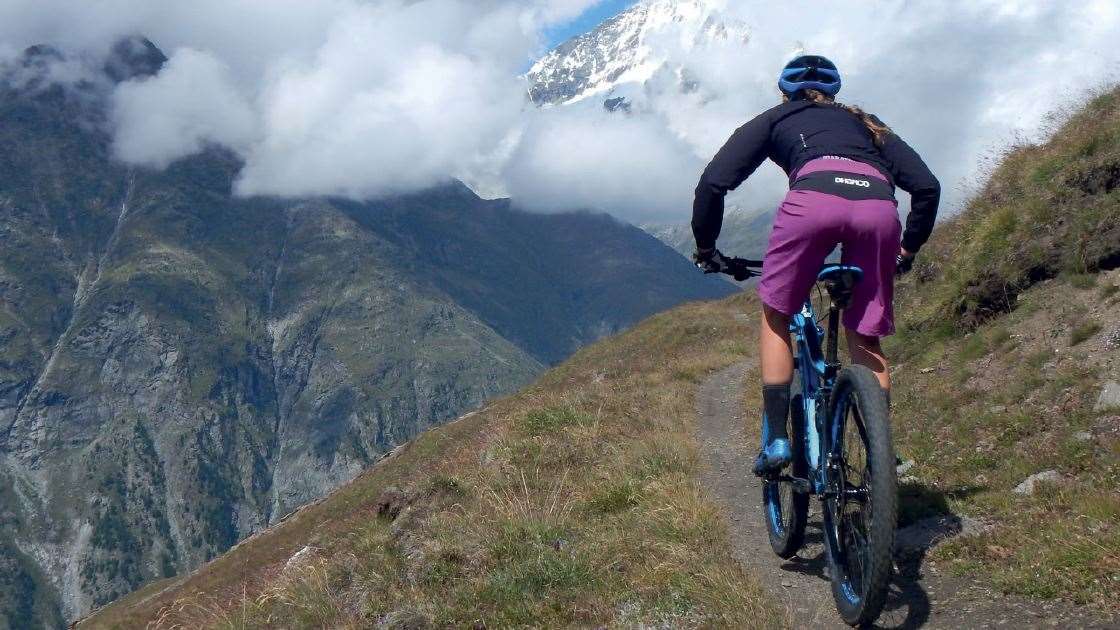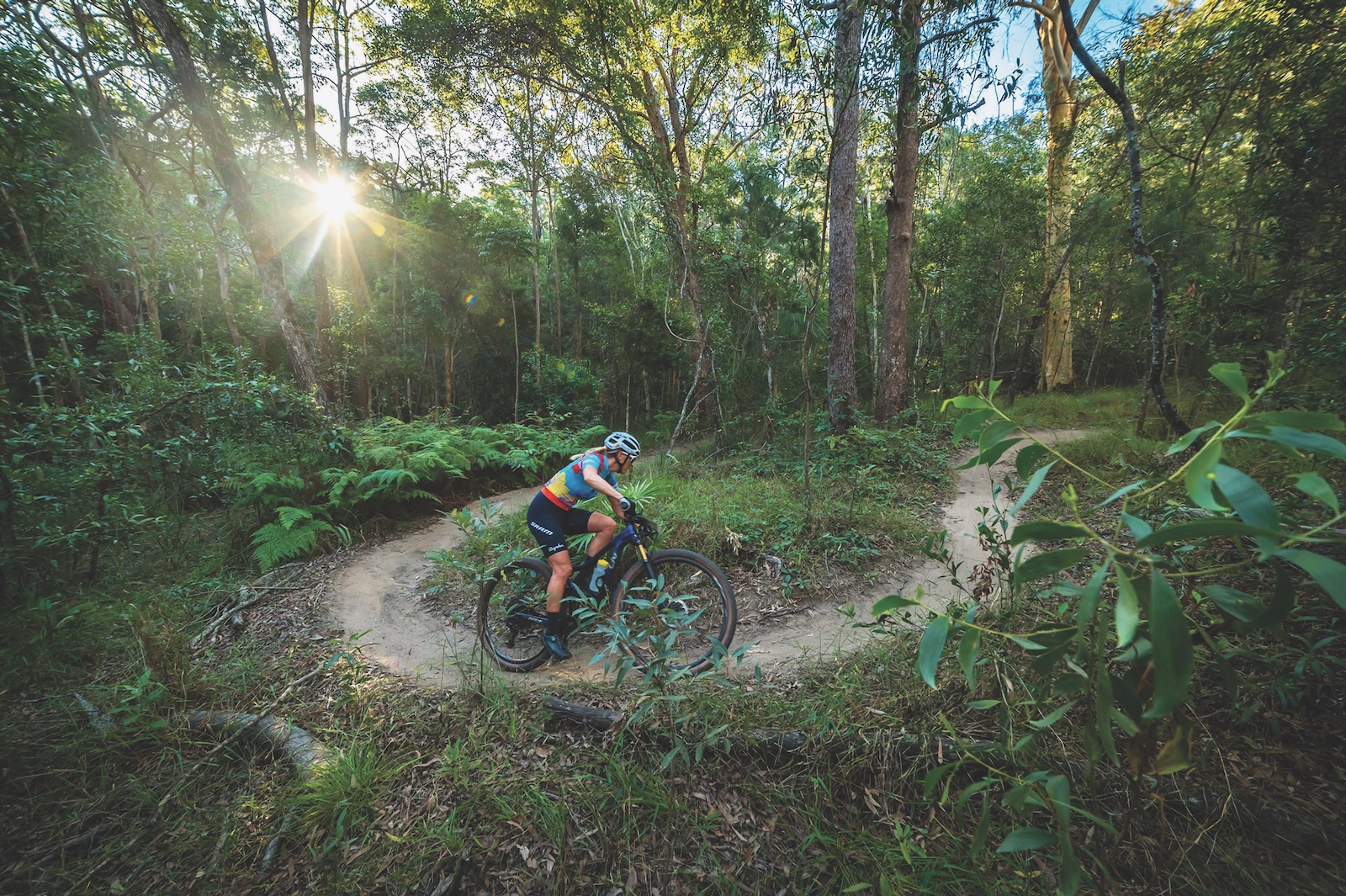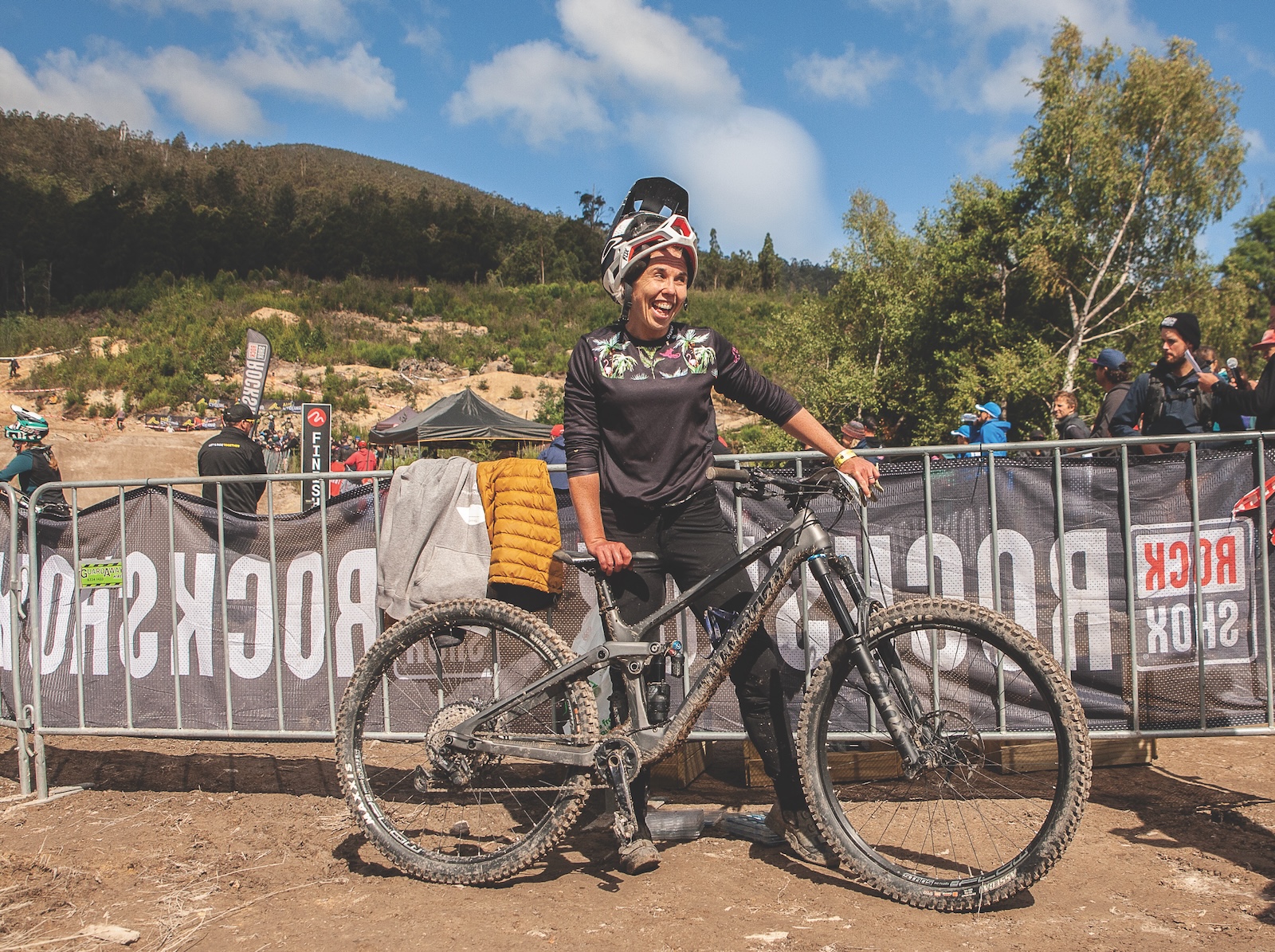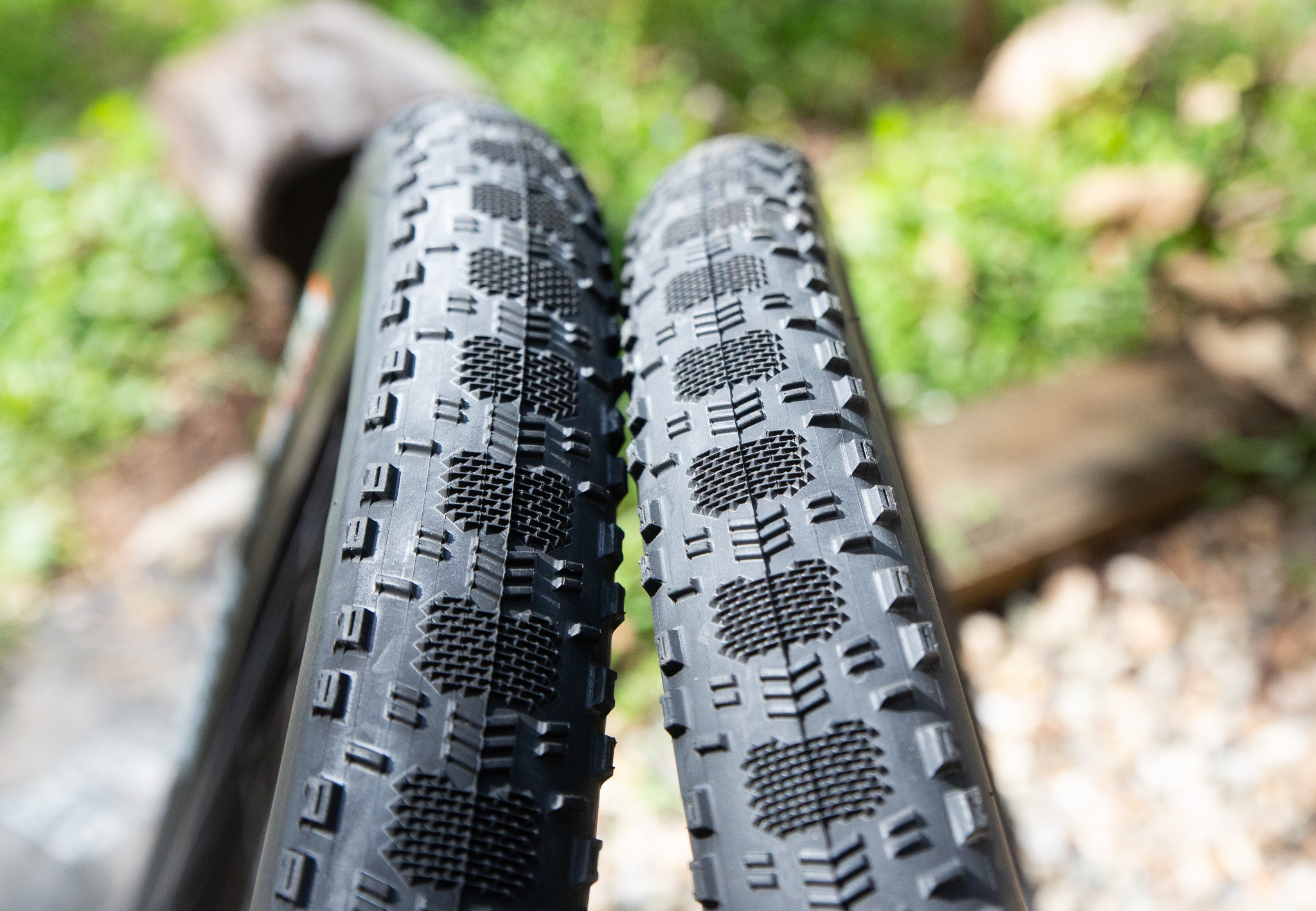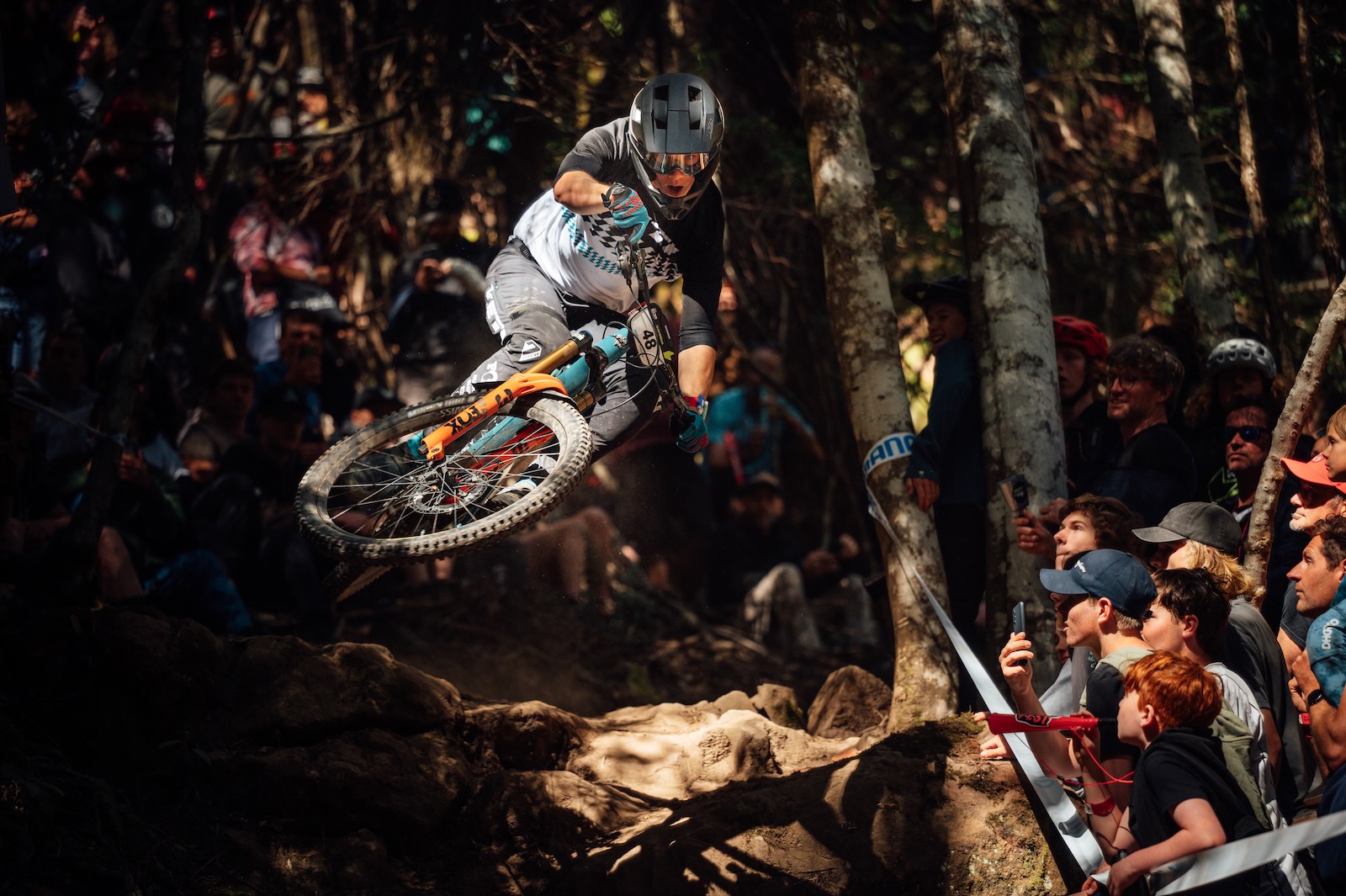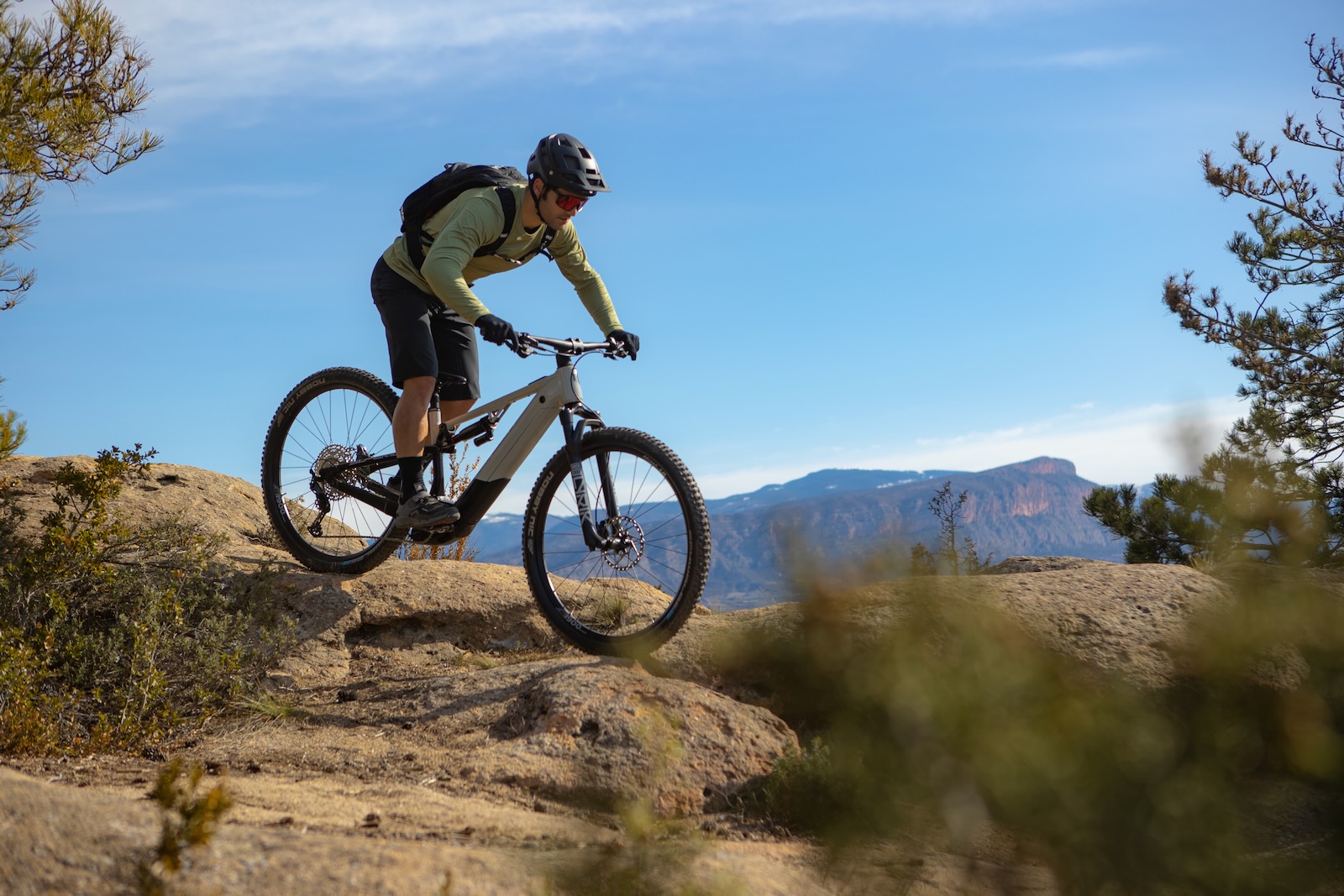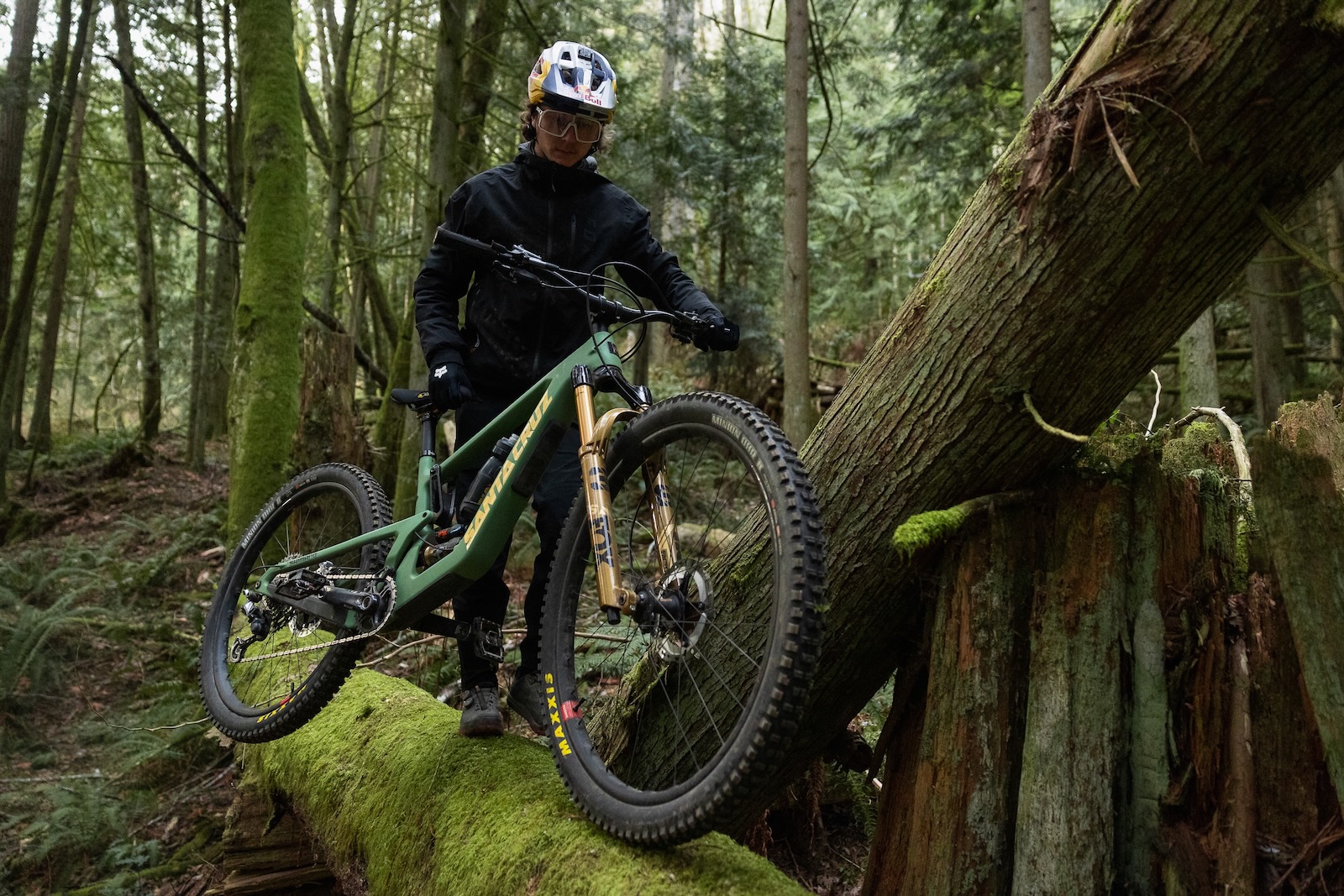Mountain Biking in Zermatt
Check into one of Switzerland's Alpine huts and keep gravity on your side.
Check into one of Switzerland’s Alpine huts and keep gravity on your side.
There’s usually a bit of a wait at Blauherd, 2571m, before you can jump on the telecabine to Rothorn, the end of the line for skiers in winter, and the start of some long and lonely adventures for mountaineers and climbers in summer. While most tourists wait outside and snap pictures of the Matterhorn in the day’s fading light, at this altitude, it’s cold even in August, so we wait indoors.
When the telecabine arrives, a close-knit bunch of four or five young Swiss get off, silently pushing an enormous trolley full of dirty linen, and each laden with sacks full of plastic and glass bottles, empty of their water, wine, and schnapps.
‘That’s the Fluhalp crew’, says the man at the kiosk where I’ve just bought a Toblerone. ‘Half of them stay up there and half come down to sleep with the washing and the recycling. Then they go back up tomorrow with fresh water and clean sheets.’
It’s the last telecabine of the day and it’s nearly empty. Not surprising. It’s too late to walk back down to Zermatt, the car-free town that feeds tourists and skiers into the mountains from 1,500 metres below. The Fluhalp hut is still a couple of kilometres from the last stop at Rothorn station (3100m), but it’s downhill, and we’re riding full-suspension Cube‘Fritzz’ mountain bikes, so it shouldn’t be a problem.
When we get off at Rothorn the sky is dark. The place is as deserted as a gulag and the wind bites our cheeks. By the time we’ve clipped in it’s snowing, and it needles our faces as we descend, somewhat shabbily, over trails carved out by centuries of hikers and alpine cows. The singletrack loops and splits, giving us any number of lines to choose from over unstable scree and sharp rocks. But our hands are frozen and tomorrow’s still ahead of us. We pick our way down to the red-shuttered hut opposite the Matterhorn.
Checking Inn
If you’ve visited a mountain hut in Australia, like perhaps Schlink’s ‘Hilton’, or Cascade Hut in the Snowy Mountains, you’ll know that they’re little more than historic refuges – tin roof, timber walls, dirt floor. A rotting sleeping platform if you’re lucky. They’re for campers, people caught in bad weather, emergencies and photographs. Switzerland’s huts are much, much more. They’re high-altitude inns, offering refuge, warmth, gourmet food, chocolate, accommodation, and even live music. Although some are only reached on foot, many are staffed year-round, and many sit above 3,000metres. The Fluhalp hut is at 2,620 metres, propped on a giant field of rock.
Huts are a godsend to mountain bikers looking to make the most of gravity: It takes a long time to climb to this altitude – whether by cable or pedal power – and we want to take our time getting down. Riders can use huts to pass between valleys while maintaining precious altitude, ride long days, and experience the alpine wilderness (most wildlife like steinbock are only around in the evenings, when lifts are shut and tourists return to the valleys). They’re a genuine part of Swiss heritage and the perfect way to experience Switzerland.
Park your bike and stay a while
We leave our bikes outside under a sheltered part of the restaurant terrace – not many thieves up here – and go inside. Fluhalp is made entirely of timber – stairs, walls, doors, chairs, tables, beds and shelves. It’s warm and cosy. A few fellow travellers sit in the restaurant sharing beers. We’re told to take room 11, and head up the creaky stairs.
Dinner starts at 7:30, so we kill time with an overdue hot shower. At just 89CHF, our stay at the Fluhalp is the cheapest night we’ll spend in Switzerland, but once there we discover some hidden expenses. The hut is connected to an electricity grid (another marvel of Swiss engineering), but relies on rainwater – and there’s not much of that in summer. Showers cost a few Francs a minute, and by the time we’re both clean, we’ve spent 15CHF – about $20 Aussie dollars.
We settle into our room. It’s quite tiny, with two single beds (timber), some hooks on the walls, and a tiny table (timber). Like the entire hut, the walls are hung with drawings and paintings of the Matterhorn.
Dinner’s a set menu, but vegetarian and other dietary needs are accommodated if you give the hut prior warning. The dining room is full – about 15 people, and there’s just one waitress, plus another couple of staff in the kitchen. Tonight there are a young Swiss couple, a table of three generations of Japanese tourists, a couple of grave-faced mountaineers, some British hikers, and us. The Fluhalp hut is part of Zermatt’s famous network of down-to-earth gourmet eateries and certainly one of the highest. We’re brought a basket of bread, fresh salad, then a delicious mushroom soup, followed by a simple spaghetti dish, and a crème caramel for dessert. The mountaineers, obviously in the know, order from the menu, and eat steak and rösti, with wine from the decent list. Perhaps we should have opted to drink, too. The tank water that made showering so expensive isn’t approved for drinking, so we’ve got to buy it. A 750ml bottle of Evian sets us back 9CHF. At altitude you’re thirstier, so we buy a couple for the night.
Fluhalp is perhaps Zermatt’s most famous hut – and it’s known for the views. We open our little red shutters, letting in frozen air, and watch the sun set, The Matterhorn, melting from grey to blue, to pink, to gold, to purple. Once dark there’s not a lot left to do, and while the hikers sit down below us drinking Schnapps, we take a few precious sips of Evian, turn off the light and try to get some sleep.
This is a lot harder to do at altitude and while there’s nothing around us for miles – no street lights, no cars or roads, no pubs or houses, not even birds, there are still other people. It could be all the timber, but at night the Fluhalp hut is like an old ship, creaking and groaning. Especially when the Japanese group convene at 5am to watch the sun rise.
They can’t have seen much. We’re blanketed in frozen fog until the sun’s risen high above the glaciers.
Breakfast is simple – breads, cheese, ham, muesli, and coffee. We head out straight after, ready for a long day’s riding.
Downhill from your doorstep
From the door of the hut, we’re into perfect gravity riding, although it was never built for bikes. There’s no nanny state in the high Alps. No guardrails or warning signs, no rangers. As long as there’s no signs that say ‘bikes verboten’ (and we see one in three days), we’re free to go wherever we choose.
The ground is made entirely of jagged chunks of grey granite, ranging from the size of a five-cent piece to the size of a school bus. Up here above the tree line the mountains are silent – there’s no leaves shaking in the breeze, few insects, and no pasture, so no bell-clanging cows. The rocks slide and clink like a xylophone as we roll over them, or loosen and tumble with a swoosh. We ride to the sound of the Alps changing shape around us.
There are so many forking trails that we climb back up some to take different routes. The morning’s spent exploring in our very own playground, chatting to hikers, and taking photos – each and every one a perfect alpine postcard.
We follow a good-looking piece of singletrack that winds down the side of the valley on steep switchbacks and rocky chutes, then climbs to the edge of a collapsing scree pile with a 100m drop on one side, crumbling under our tyres and giving us all a fright. There’s no way off but to ride to the end, and when we drop back down to stable ground we follow fast, hardpack singletrack to a little collection of timber shack’s where we’ve been told there’s a great restaurant. Lunchtime’s just about here.
Restaurant Findlerhof’s at 2050 metres above sea level, and serves the kind of fresh, healthy, and locally-sourced food we’re getting used to in Switzerland (www.findlerhof.ch). We sit on the sun terrace and stare up at the Matterhorn until we’re served crisp salads, bread, mineral water, beer, and pasta, followed by coffee and cake. The spot is so idyllic that it’s a bit hard to leave, but we do, following the trail that passes through the tiny hamlet and down to the treeline, where the valley comes to life with alpine flowers, bees, hikers, and sweet-scented pines. We follow the signs towards Zermatt, choosing to descend scores of steep, rooty switchbacks through the forest. Although some corners are too tight to ride, having been made for walkers, we make it down the majority and emerge below a waterfall, then follow bitumen back streets down into town. A thousand metres above us, the staff who served us dinner last night will be loading our sheets and empty Evian bottles into carts and dragging them up to the telecabine at Rothorn, while their colleagues prepare to feed hungry travellers come to watch the sun set over the Matterhorn.
Your Body at Altitude
Once you climb above about 2,000 metres, the saturation of oxygen in your blood starts to drop. This is caused not by a low concentration of oxygen in the air (it remains the same as it is at sea level), but because of lower atmospheric pressure. Basically, the higher you go, the further apart those oxygen molecules get, so each breath you take in fewer than you would if you’d just stayed on that yacht on Sydney Harbour.
At first you’ll notice your breathing rate increase, and maybe your heart rate as well, particularly when riding or walking. You’ll also need to pee more as your body adjusts its pH balance and loses more fluid from increased evaporation from your skin and lungs – you’ll need to drink more water. Some people also retain water and may experience a bit of oedema – perhaps noticing some swelling around the ankles and calves.
It’s really common to sleep quite poorly at altitude, and you might find you wake up frequently or sleep extremely lightly. This can be a result of Periodic Breathing, where your body finds it difficult to manage O2 and CO2 balance, and you alternate between taking big breaths and holding your breath in your sleep. It’s quite common and usually not dangerous, just annoying when there’s a full day’s riding coming up.
All these symptoms generally resolve as your body adapts over a few days.
Performance-minded readers might be interested to learn that once you’re above 1,500m, your VO2 max drops 3% for every 300m you climb. Don’t expect to set any PBs while you’re riding high.
Images: Mike Blewitt & Imogen Smith

